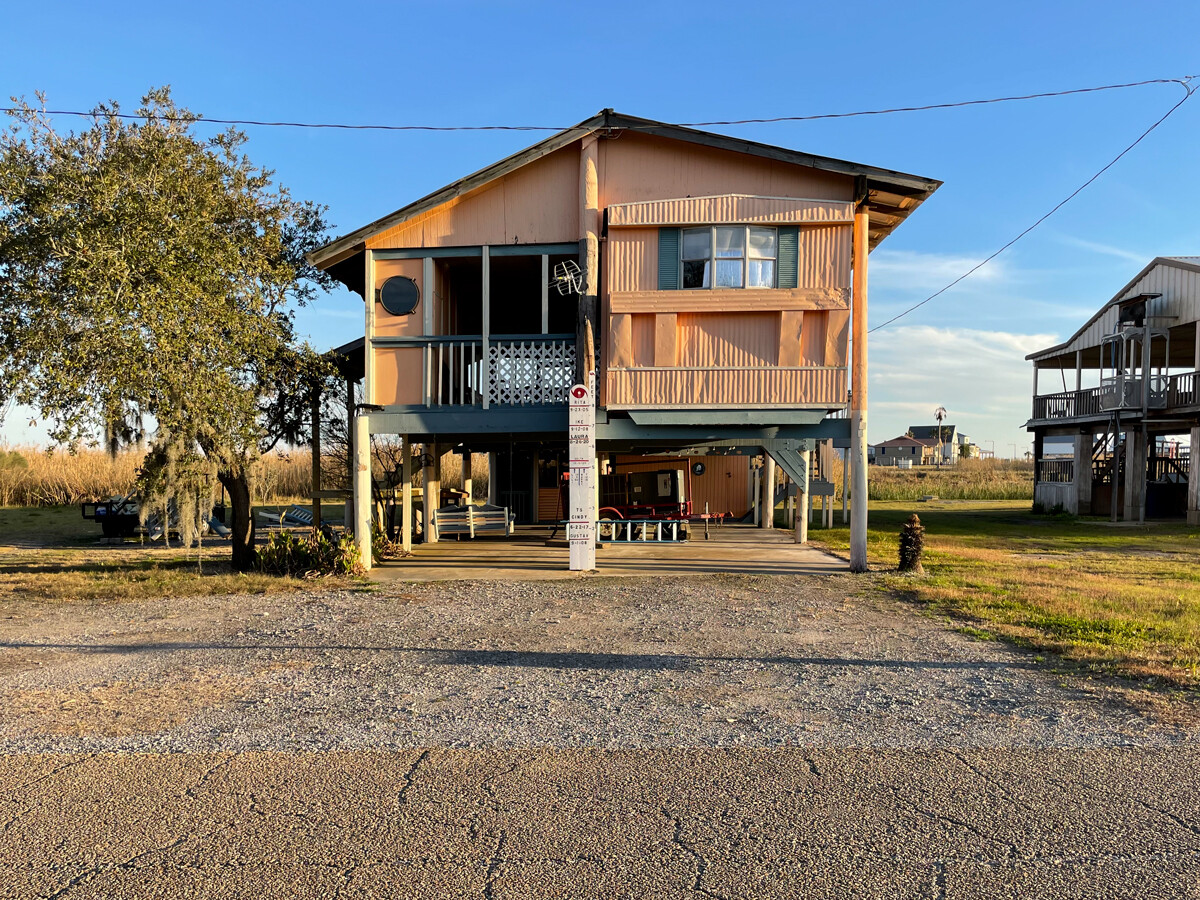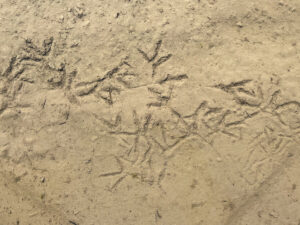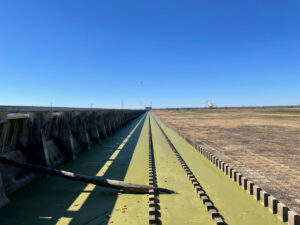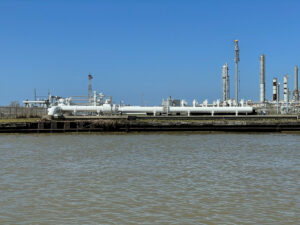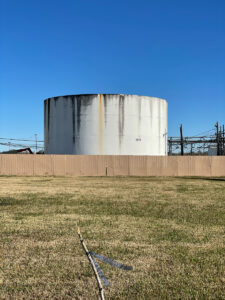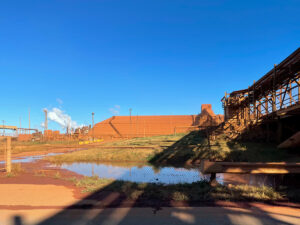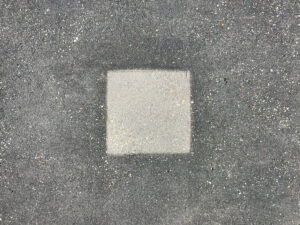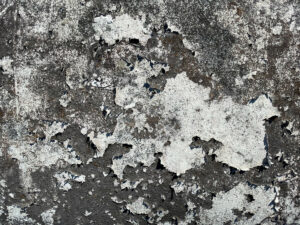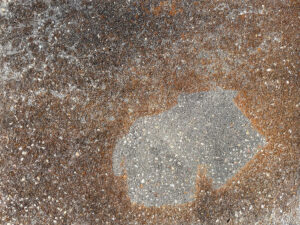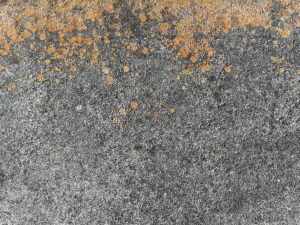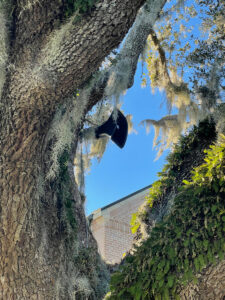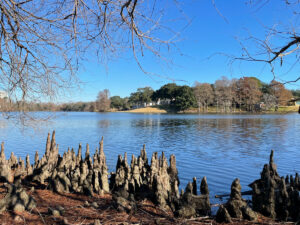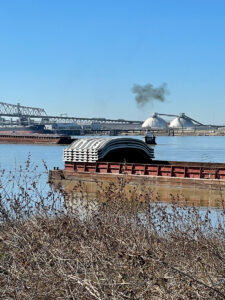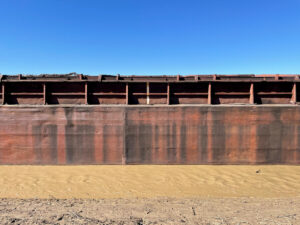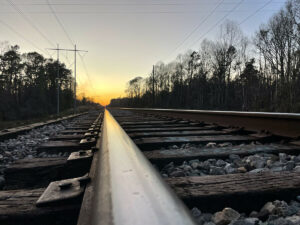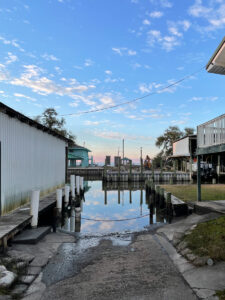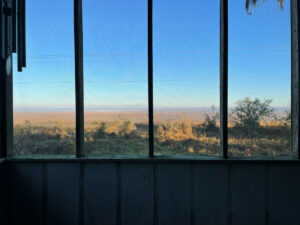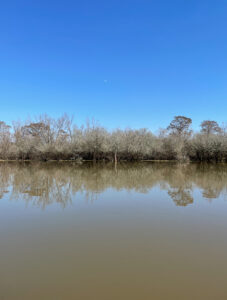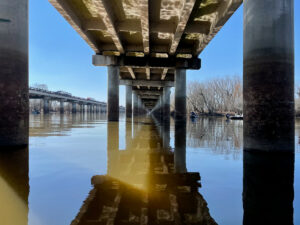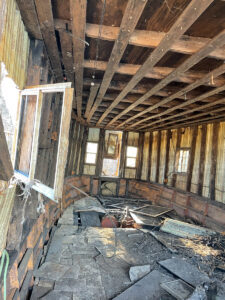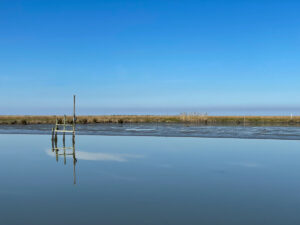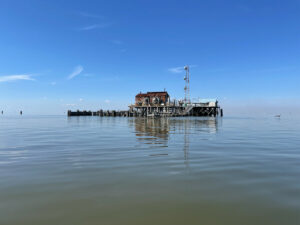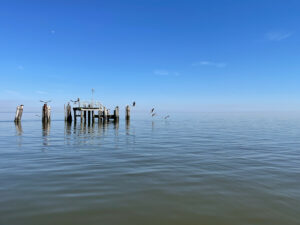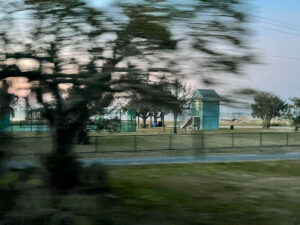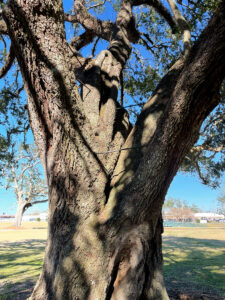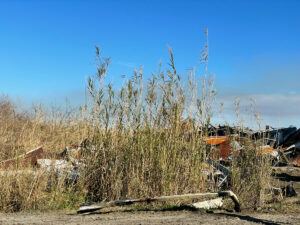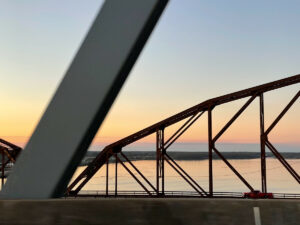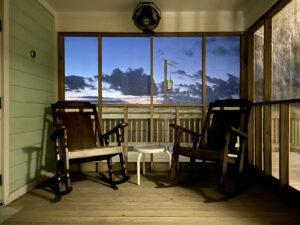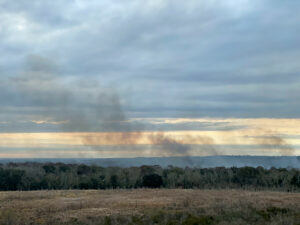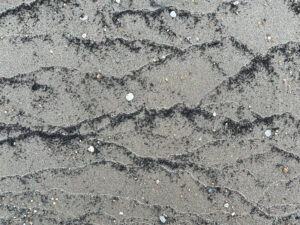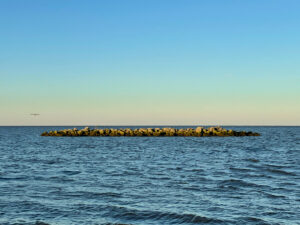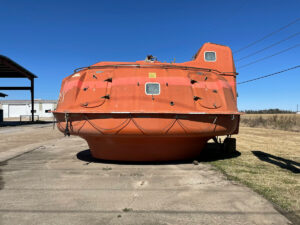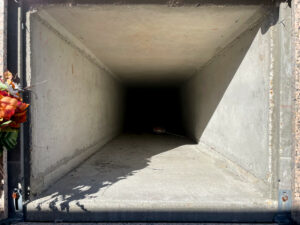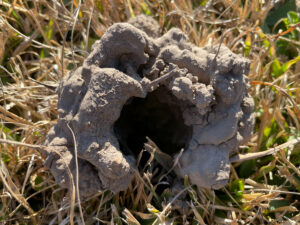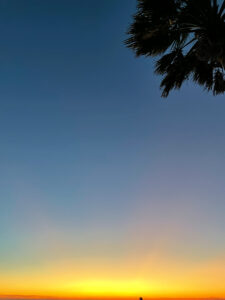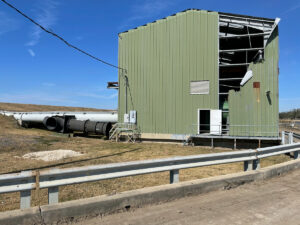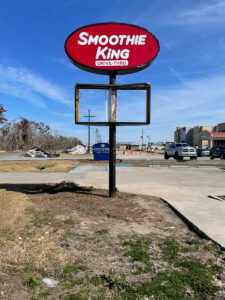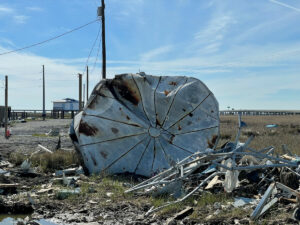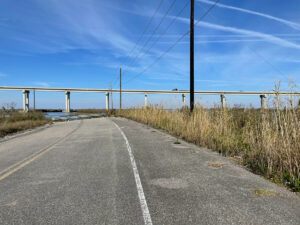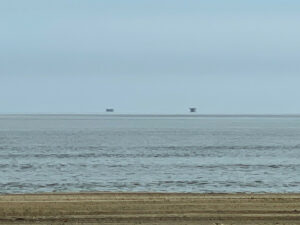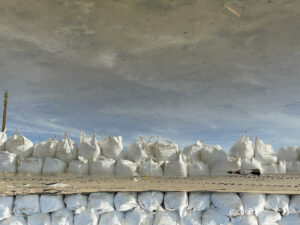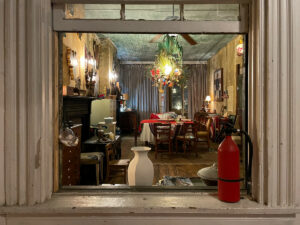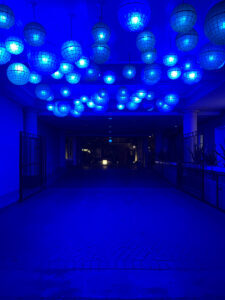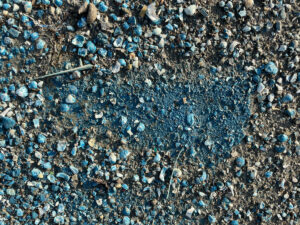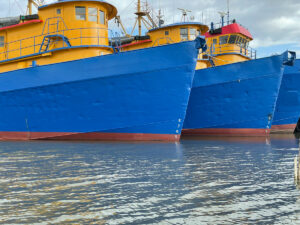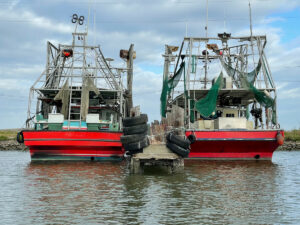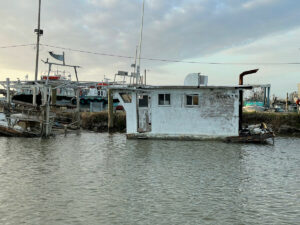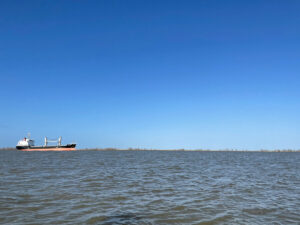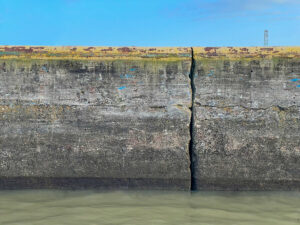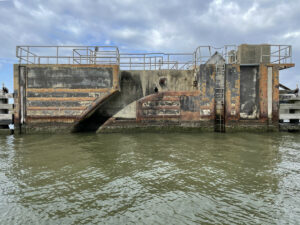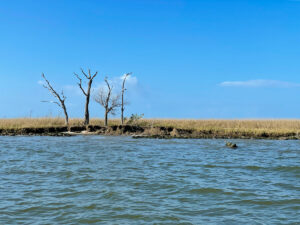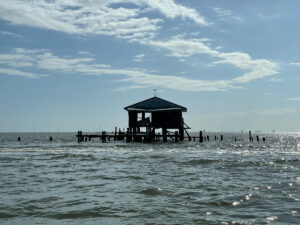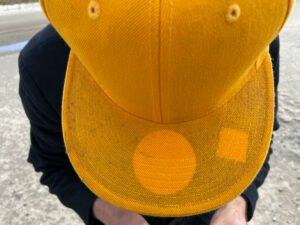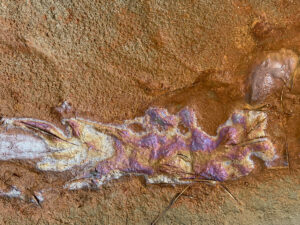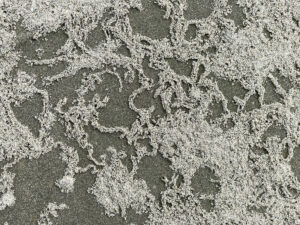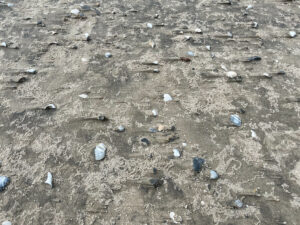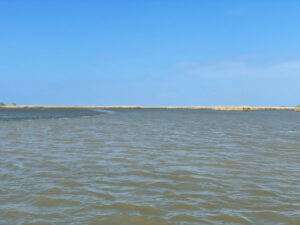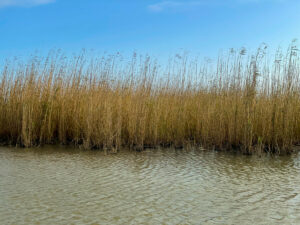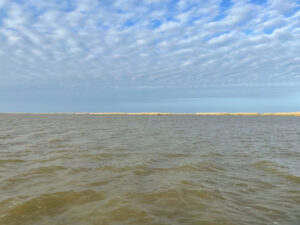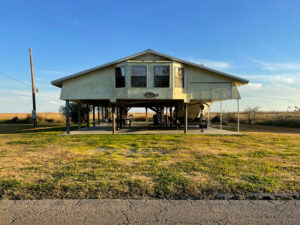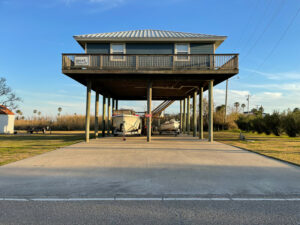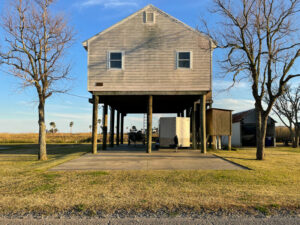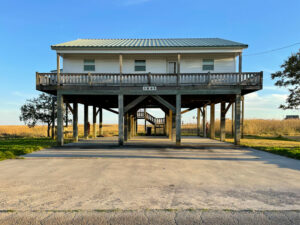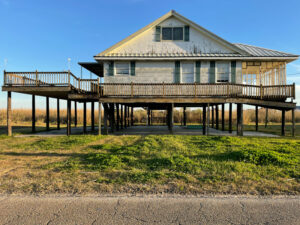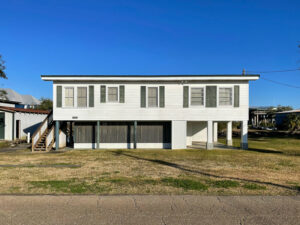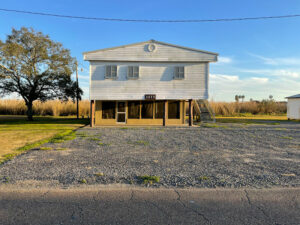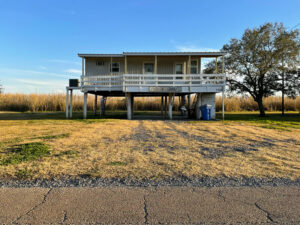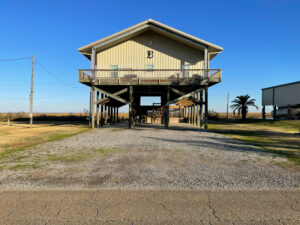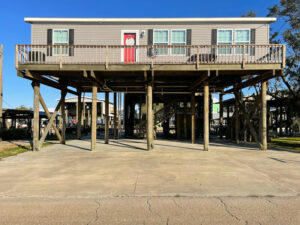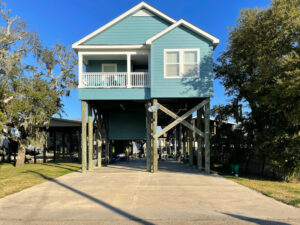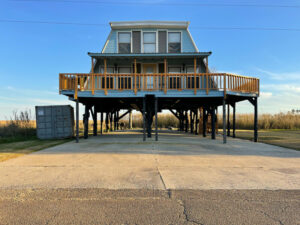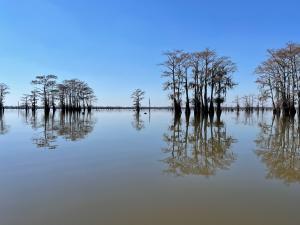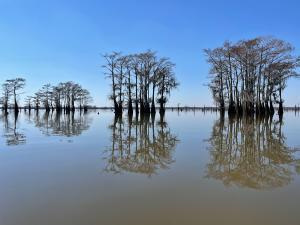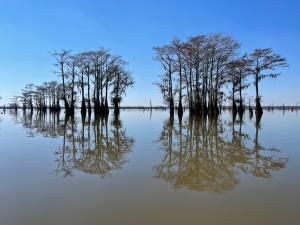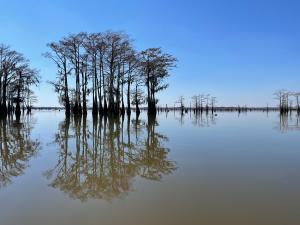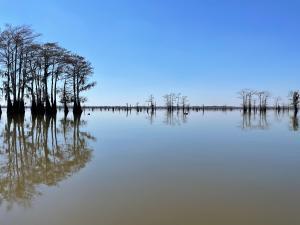Portrait of house taken between 3176 and 3865 Hwy 319 Cypremort Point, LA 70538, USA, 2022.
In March 2018, I was invited to participate in an arts-sciences research project by Jennifer Buyck. At the time, she was an architect and urban planner at IUGA. Today, she still works as an architect and urban planner, but at Eiffel University in Paris.
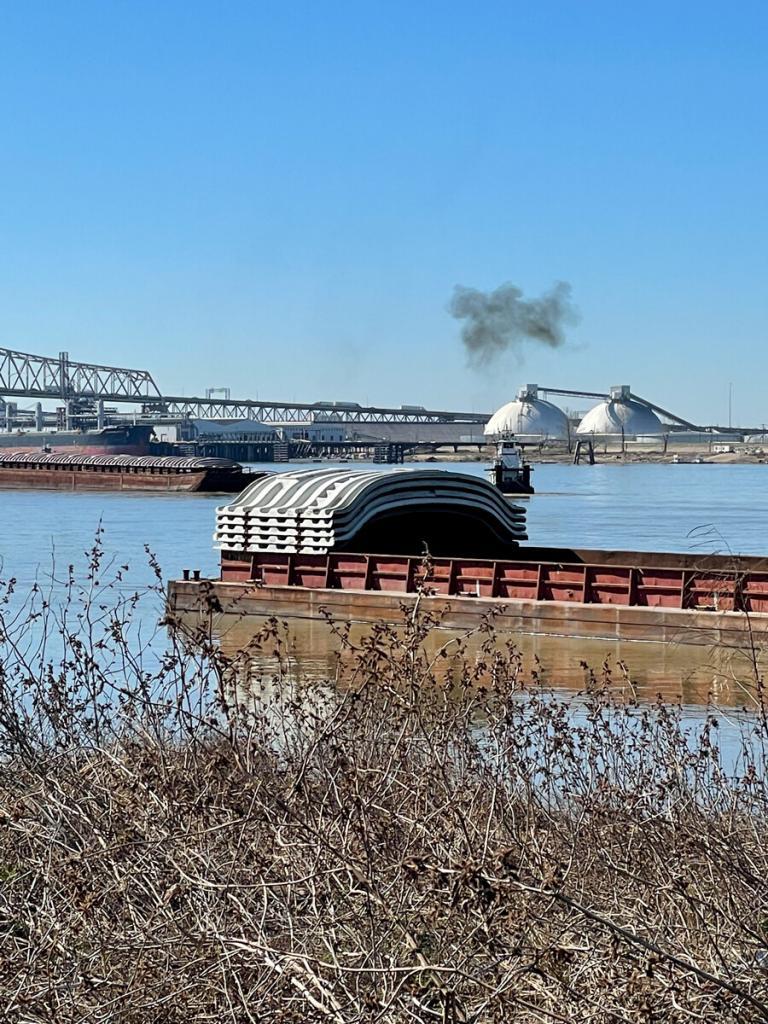
At the crossroads of urban studies, environmental anthropology, literary analysis and artistic experimentation, the research project “Still on the Map! ” took as its framework the study of the Mississippi Delta, fifteen years after Hurricane Katrina, and some five years after the commissioning of a major new infrastructure to protect against the risk of a 100-year flood: Morganza to the Gulf (MTG) is a 158km Hurricane and Storm Damage Risk Reduction (HSDRR) project…
The research trip has been scheduled from January 29 to February 19, 2022 between New Orleans, the Achafalaya Basin, Lafayette, Morgan City, Cypremort Point, Houma, Venice and Baton Rouge in Louisiana, USA.

During this trip, with my colleague and friend Germain Meulemans, an anthropologist, we decided to meet some of the people interviewed by Frédéric Allamel for his book: “Eco-refugiés au pays des bayous. The Houma Indians in the Gulf of Mexico”. 2020.
As an artist, it seemed to me an easier way to meet people in Louisiana, to get in touch with other artists. And in doing so, to exchange with them about our specific relationship with landscapes, and our relationship with air in particular.
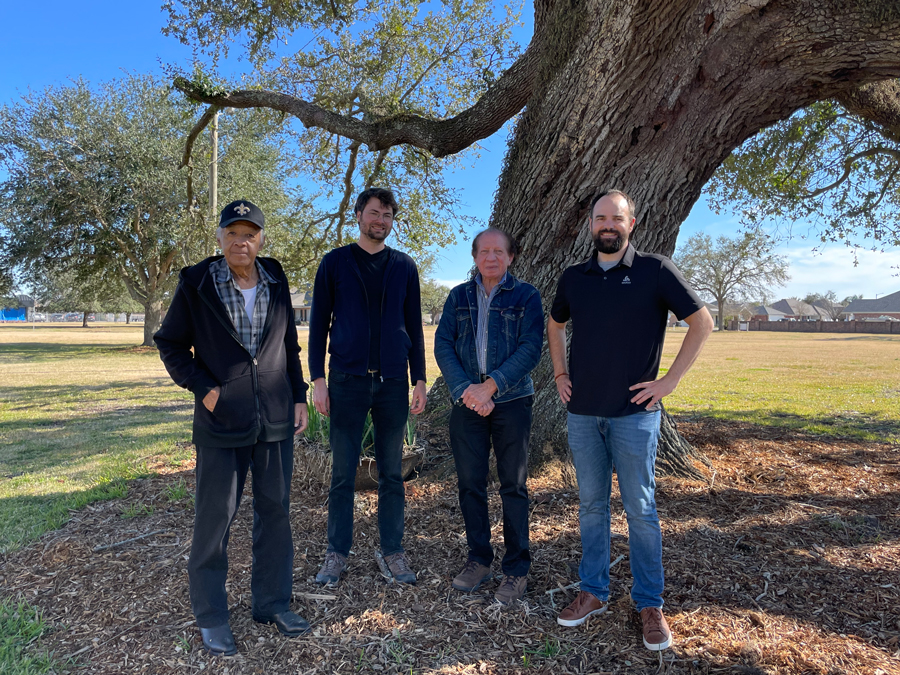
That’s how I met Roy Parfait and Ivy Billiot. They are two famous sculptors from the Houma community: “Carvers”. With Germain and two other colleagues, we were invited to discover their work in the place where they lived. Ivy lives with her brother in a working-class district of Houma.
Roy lives in Dulac with his sister. After Hurricane Ida, Roy’s house was totally destroyed. Since then, he’s been living in a mobile home right next door…
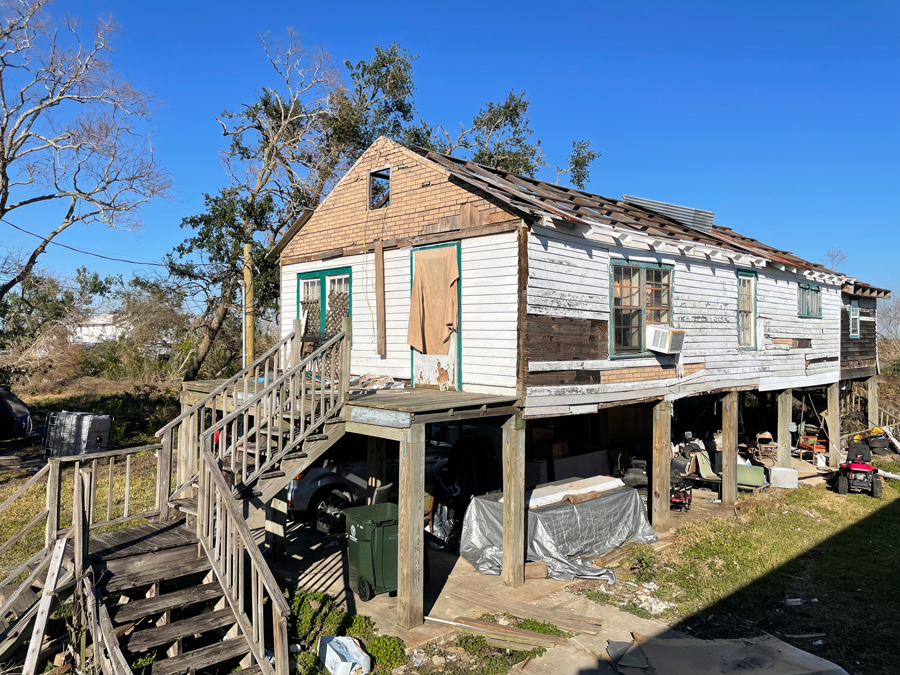
What struck me, when we talked with Roy about his house, was the way he projected himself into rebuilding it. I mean, he was projecting himself into rebuilding his house while knowing that in a few years, 2, 5 or 20 (nobody knows), another hurricane will surely hit again! It was as if Roy lived indefinitely between two hurricanes. This encounter with Roy led me to investigate all manifestations of the air during my trip to Louisiana. For me, photography is above all a masking process. You can focus on one part of reality with an image, and what you end up producing on a massive scale is the off-field. Through a process of accumulation, it’s then tempting to weave an imperfect, fragile web, a network, and thus speak of the “between”…
This is what inspired the “Hors Saison” project: it consists of a poem (below) and a series of 60 digital photographs in 52x70cm format.
Hors saison (2020 – 2022)
“Right in the heart of winter
In between two mosquito outbreaks
In between two humid and stifling heatwaves
How can one speak about the density of the air?
The thickness of the mud inside the house?
The wind rising once more?
The nine months of BP Horizon?
The passing hurricane?
The noise of engines?
The bereavement to come?
What can one experience in between two storms?
What relationship to air can be there ?“
Yves Monnier
Series of photographs taken between Baton Rouge, Le Bassin de l’Atchafalaya, Cypresmort Point, Venice, Grand Isle and La Nouvelle Orléans, USA, 2022
Pilotis (2020 – 2022)
For the series entitled “Pilotis”, I visited the University of Louisiana’s Museum of Rural Life. Then we went to Cypresmort Point. While there, I was surprised by the difference in size of the pilings compared to traditional buildings. Traditionally, pilings are built to a height of just one foot to protect houses from the dampness of the ground. But at Cypremort Point, I discovered houses built between 3 and 6.7 meters off the ground, or even more. One house in particular caught my eye.
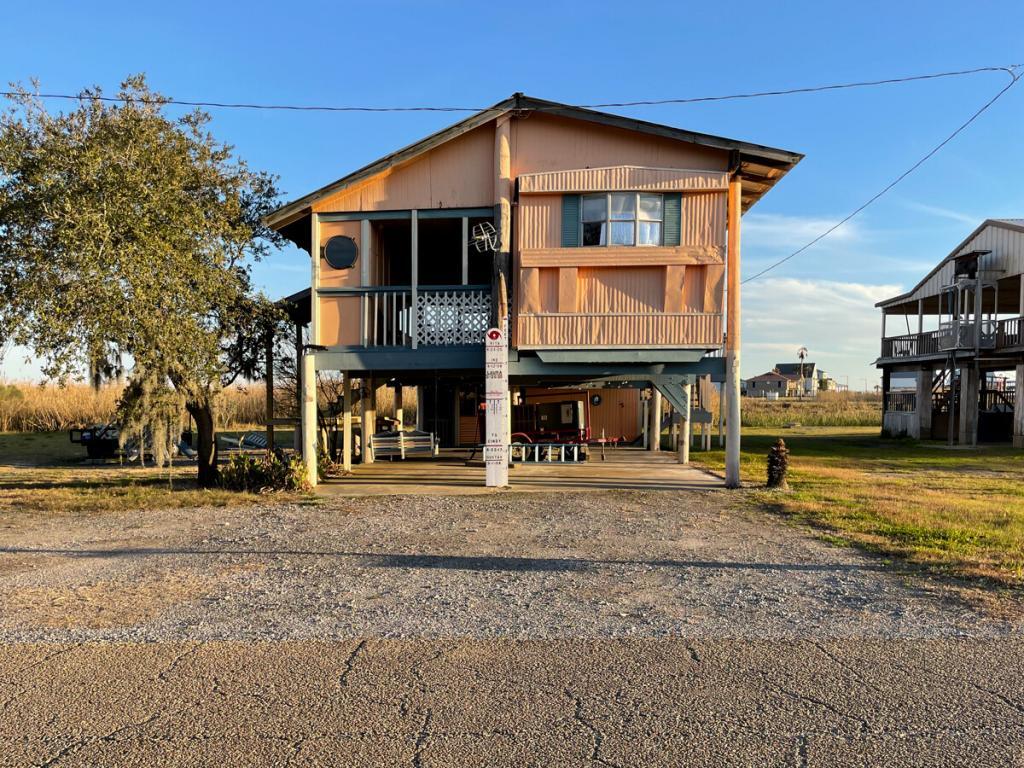
In front of this house, lines have been drawn for each past hurricane, and the floor is now just above the last mark.
I couldn’t help but create a kind of personal fiction about how these houses were built. And in the back of my mind, I wondered: were they really built according to the waves and the strength of the wind? Of course, there are also purely practical questions about the enormous size of the stilts… And yet, as you know, today’s hurricanes are more violent than ever before.
So my question was: is this one of the reasons why these houses need to get bigger and bigger? At the time, for me, they were a kind of testimony to a specific relationship between humans and the natural elements.
Portrait of house taken between 3176 and 3865 Hwy 319 Cypremort Point, LA 70538, USA, 2022
Cyprès (2020 – 2022)
The “Cypres” series was born of the fact that a kind of moss or lichen had colonized the trunks of the trees, but had not colonized the part of the trunks that would be flooded during the high-water season. Thus, when I was in Anderson, I discovered cypress trunks with a dark zone extending 3 or 4 feet between the surface of the water and the beginning of the moss or lichen zone.
Once again, this materialized a very specific relationship with the air, but from the point of view of the moss or lichen’s needs…
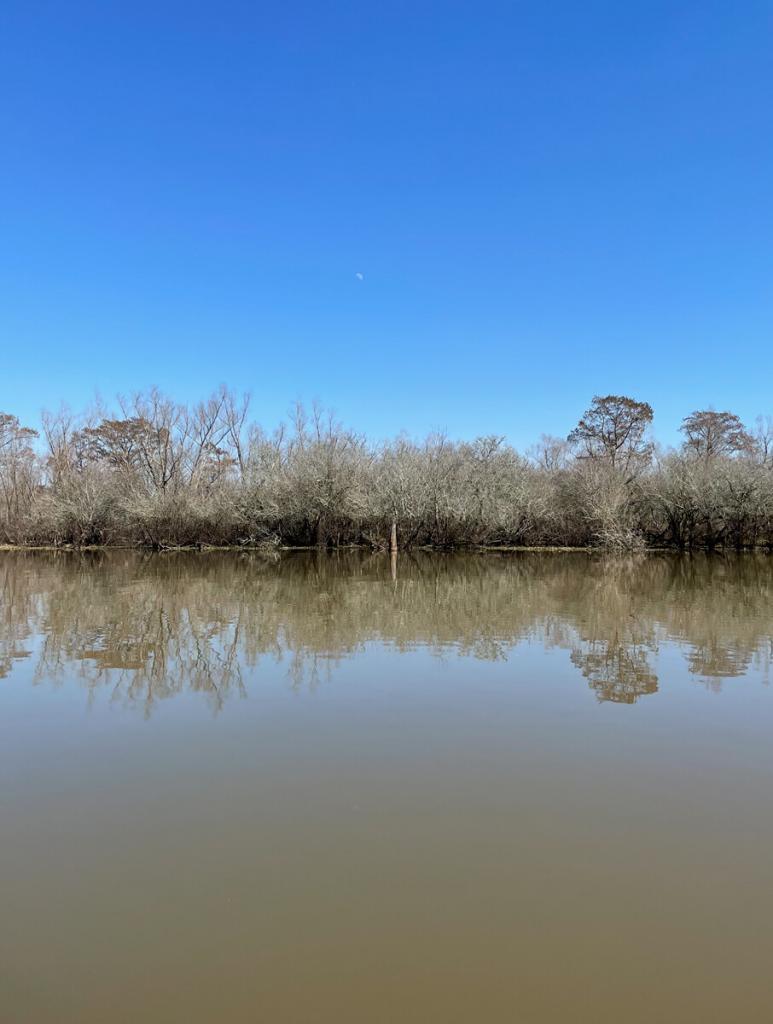
Cypress portraits taken in HENDERSON, LA 70517, USA, 2022.
For more information, please visit the dedicated website: Still on the Map!
